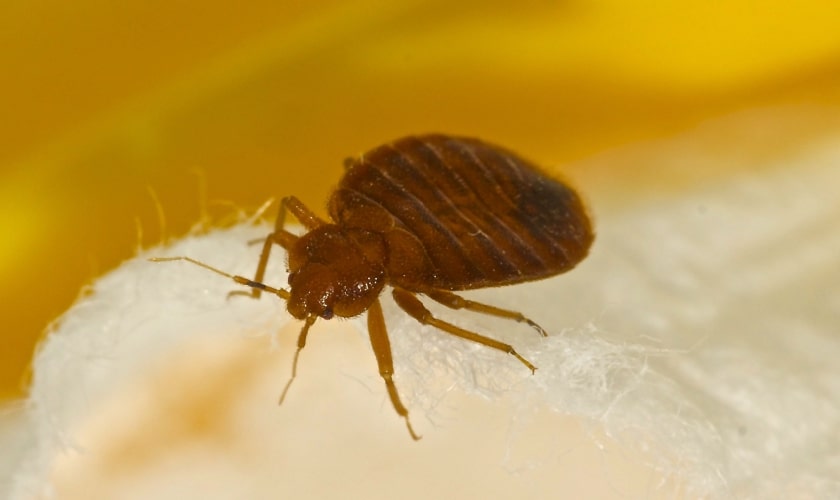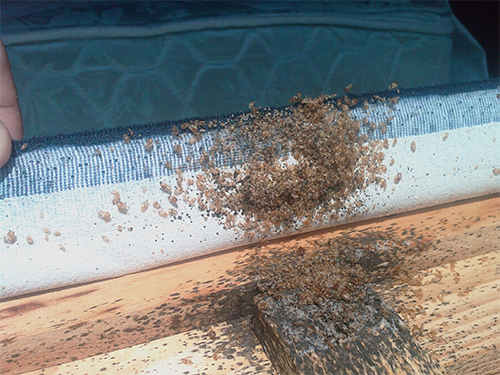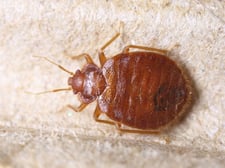Professional Kings Bug Control Cincinnati: Your Relied On Pest control experts
Professional Kings Bug Control Cincinnati: Your Relied On Pest control experts
Blog Article
Kinds of Pest Control: Which Approach Is Right for Your Problem?
When encountered with an insect invasion, the selection of an appropriate method for parasite control is critical in effectively taking care of the circumstance. By checking out the numerous types of bug control techniques offered, individuals can make educated choices tailored to their one-of-a-kind scenarios, making sure an extra reliable and lasting end result in bug eradication.
Chemical Parasite Control
Chemical bug control involves the usage of synthetic or normally obtained chemicals to manage and get rid of pest populaces properly. This method is frequently used in agriculture, forestry, and domestic settings to battle a vast array of bugs, consisting of rats, weeds, and insects. Making use of chemical pesticides can give fast and targeted options to pest invasions, making it a preferred choice for several individuals and organizations.
One of the key benefits of chemical parasite control is its capability to promptly remove pests, reducing the threat of damage to plants, home, and human health and wellness. By utilizing particular chemicals that target specific parasites, this approach can successfully regulate invasions while decreasing harm to advantageous microorganisms and the environment when used properly.
Nonetheless, the use of chemical pest control additionally raises worries regarding possible adverse results on non-target types, water resources, and human health. It is critical to adhere to safety and security standards, use chemicals properly, and take into consideration different bug control approaches to lessen these threats and make sure lasting bug administration practices.
Biological Parasite Control
Organic parasite control, additionally called biocontrol, makes use of living organisms to lower and manage parasite populations normally. This approach utilizes the power of nature to regulate insects without the demand for synthetic chemicals. Biocontrol can entail the introduction of all-natural adversaries of the insect varieties, such as pathogens, parasites, or killers, to subdue pest populations. By utilizing the pest's natural predators or microorganisms, organic pest control provides a sustainable and environmentally pleasant solution to pest administration.

Mechanical Insect Control
Making use of manual and physical techniques to manage bug populations, mechanical bug control provides a different method that does not count on using living microorganisms or synthetic chemicals. This technique involves the usage of obstacles, traps, or various other devices to physically hinder or get rid of parasites. By blocking bug entry points or establishing up traps to capture them, mechanical pest control can successfully reduce invasions without presenting chemicals right into the atmosphere.
One usual example of mechanical parasite control is making use of mesh screens on doors and windows to avoid pests from going into structures. This straightforward yet effective technique works as a physical barrier, keeping bugs out while permitting for proper ventilation. Furthermore, tools like mousetraps, fly swatters, and ultrasonic repellents drop under the mechanical pest control classification.
While mechanical bug control approaches can be labor-intensive and call for regular monitoring and maintenance, they use a lasting and eco pleasant service for handling insect invasions. By integrating various mechanical strategies, homeowner can produce a detailed bug control method that decreases dependence on chemical pesticides.
Physical Parasite Control

Some common physical insect control approaches include using barriers such as displays or nets to stop parasite entry, catches to record and eliminate parasites, and hand-picking to physically eliminate pests from plants or structures. In addition, techniques like warm therapies can be used to manage parasites like bed bugs by increasing the temperature level to levels that are deadly to the bugs.
Physical parasite control is particularly beneficial in incorporated pest monitoring (IPM) approaches, where several parasite control methods are integrated for efficient pest administration while reducing using chemicals. By making use of physical bug control strategies, individuals can efficiently deal with insect problems with marginal environmental influence.
Integrated Pest Monitoring
When implementing physical insect control approaches as part of bug management approaches, Integrated Bug Administration (IPM) arises as a detailed strategy that leverages different techniques to effectively regulate pest populaces. IPM concentrates on long-lasting avoidance of parasites via a combination of biological, cultural, physical, and chemical tools customized to particular pest problems. By integrating multiple control strategies, IPM aims to lessen the dangers linked with insects while additionally minimizing reliance on chemical solutions.
One key aspect of IPM is the focus on monitoring and assessing pest populaces to figure out one of the most suitable control methods. This aggressive strategy enables early intervention and targeted methods, bring about more reliable bug administration. Additionally, IPM promotes environmentally friendly methods by focusing on non-chemical control approaches and just using chemicals as a last hope.
Final Thought

By using the insect's natural predators or pathogens, biological pest control offers a sustainable and environmentally friendly option to pest monitoring. - Kings Bed bug exterminator Cincinnati
Using manual and physical approaches to handle insect populations, mechanical parasite control uses an alternative approach that does not count on the use of living organisms or artificial chemicals.An efficient method to taking care of bug populations without counting on chemical or biological approaches includes the use of physical bug control methods.When implementing physical parasite control techniques as component of insect monitoring methods, Integrated Pest Monitoring (IPM) emerges as a thorough method that leverages numerous techniques to properly manage pest populaces. Chemical insect control entails the that site use of pesticides, organic insect control makes use of natural predators, mechanical parasite control involves physical obstacles, physical pest control includes capturing or removing bugs, and incorporated insect administration combines several approaches for a holistic method to pest control.
Report this page